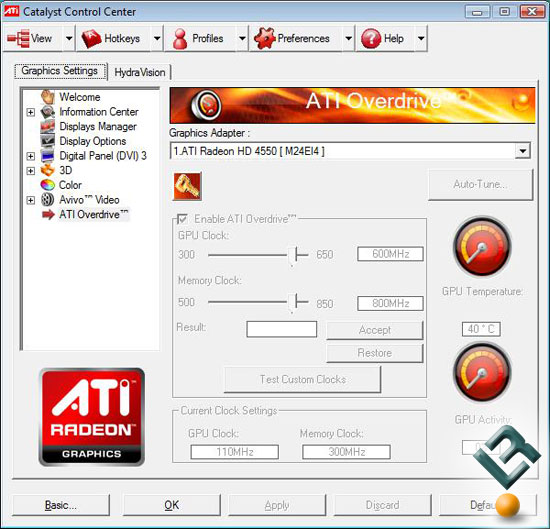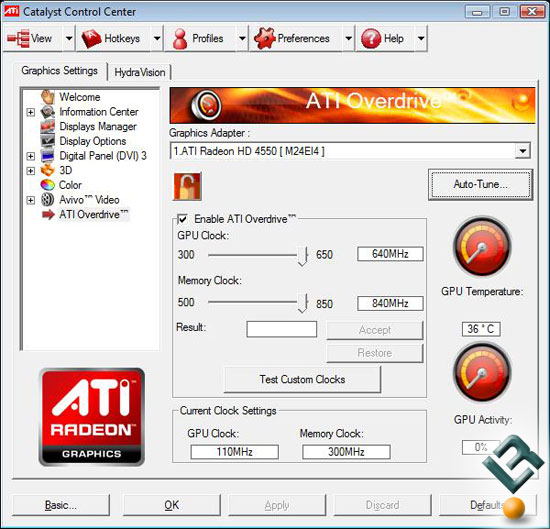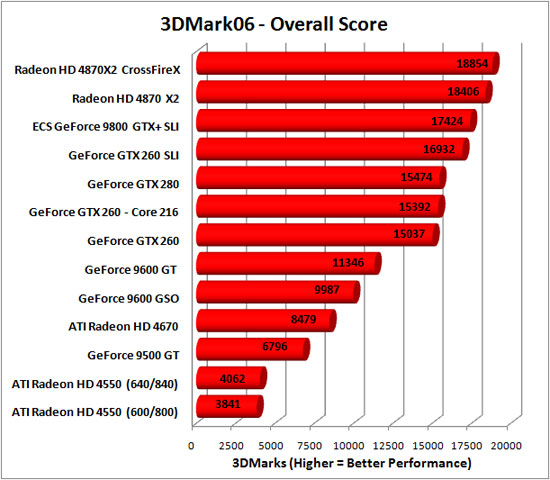AMD’s ATI Radeon HD 4550 Video Card Review
Overclocking

To overclock the reference Radeon HD 4550 graphics card, I used ATI Overdrive that is part of the CATALYST Control Center. When you ‘unlock’ the ATI Overdrive, you can manually set the clock and memory settings or let the ‘auto-tune’ utility set the frequencies for you. Just for fun, I tried out the auto-tune feature to see if it could really find a stable clock configuration and it worked in just a few minutes and did not lock up the system. Before I dive deeper into overclocking I wanted to point out that at idle the GPU core clock runs at 110MHz and the memory runs at just 300MHz in order to save power. The core clock on the Radeon HD 4550 idles lower than the ATI Radeon HD 4670 graphics card as its core runs at 165MHz with the memory 250MHz in order to save power.

When the auto-tune utility starts up a new window will open and the graphics card is overclocked. This utility determines the highest core and memory clock frequency that is stable and shows you what the GPU temperature is and how much load the GPU is under during testing. I started out at the default settings of 600MHz on the core and 800Mhz on the memory, but was able to reach 640MHz on the core and 840Mhz on the memory. This is a 40MHz overclock on the core and 40MHz on the memory. Not a bad overclock, but this is just a 6.6% overclock on the overall GPU frequency.

To test out the overclock I fired up 3DMark06 again and ran the benchmark with the new clock frequencies. The score went up 221 points, which was an improvement of 5.7%!

Comments are closed.